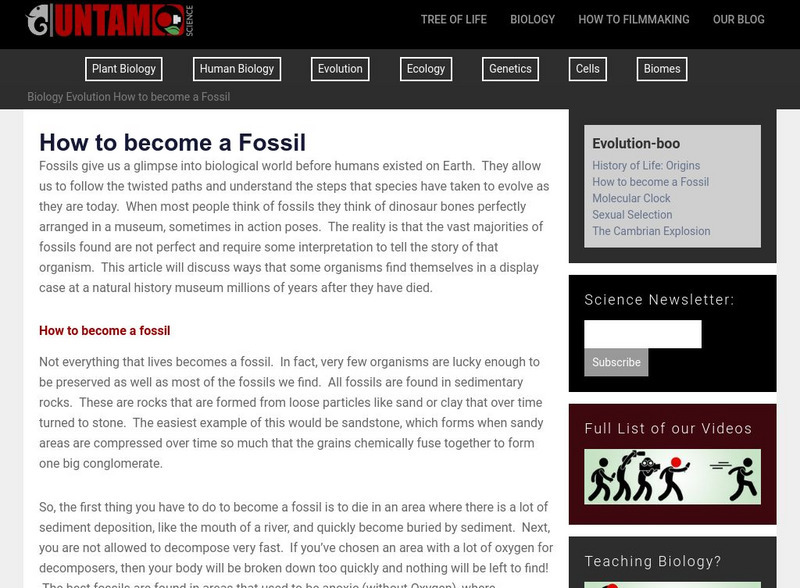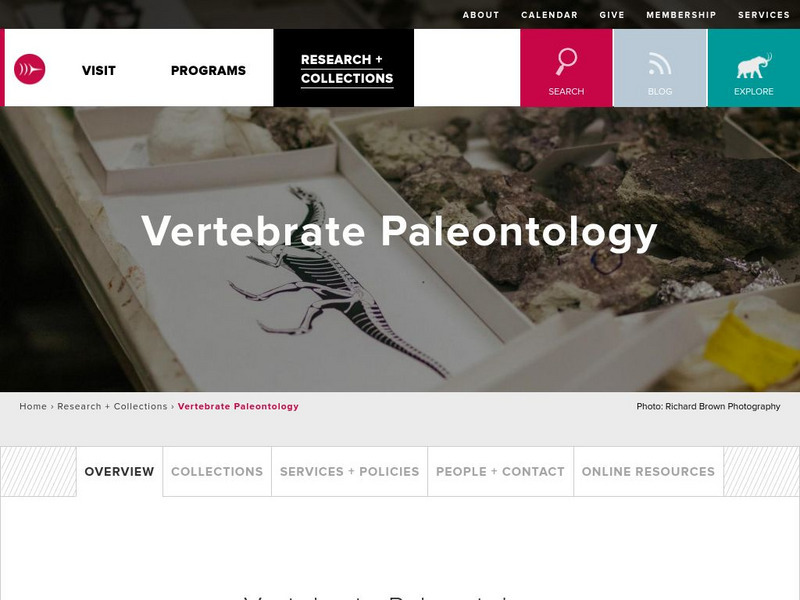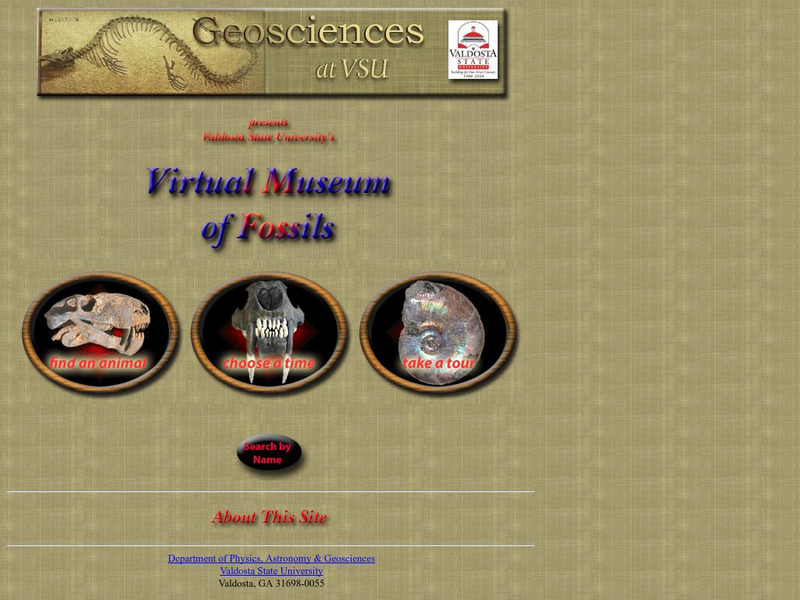American Museum of Natural History
T. Rex Roar Mixer
Scholars predict the sound of a tyrannosaurus rex roar with a mixing board equipped with audio from crocodiles, chickens, loon, macaw, peccary, sea lion, and bison.
American Museum of Natural History
Pterosaurs: The Card Game
Piecing together the past is a challenging endeavor. Learners get a taste of that challenge as they play a game that incorporates several components such as trophic levels, geological time periods, and catastrophic events. Pairs work to...
Curated OER
Earth Science Lesson Plans on Geologic Time
Springboard your fourth and fifth graders into the study geologic time. They will complete 7 activities to learn about geologic time and the topics most often associated with it: astronomy, creation, planet formation, volcanology,...
American Museum of Natural History
Dress up a T. Rex
Scholars play with an image's color and brightness to predict how tyrannosaurus rex's skin, feathers, and eyes would have appeared. Information and real-world pictures shed light on what evidence guides our assumption of how a...
Curated OER
Branches of Science Lesson Plans
Teachers can use branches of science lesson plans to get students excited about science careers.
California Academy of Science
What Kind of Geologist Am I?
Transform your class into young geologists as they learn about six different branches of geology. Using the included geology career descriptions and picture cards, learners work in small groups deciding which tools and locations fit...
Curated OER
Dinosaur Eggs Discovered! Unscrambling the Clues
Just a heads up: this lesson is based on a book, Dinosaur Eggs Discovered! Unscrambling the Clues. If you do not have or do not want to purchase the book, you may still find the other activities and worksheets useful in your earth...
Curated OER
Geologic Age
Young scholars investigate radioactivity as a tool for measuring geologic time and how geologists use this information to determine the absolute age of rocks or minerals.
Curated OER
Rocks, Minerals, and Erosion
Students identify and describe rocks that contain records of the earth's history and explain how they were formed. They formulate questions about and identify needs and problems related to objects and events in the environment, and...
Curated OER
Using computers in the content area
Students practice grade appropriate computer basics and integrate them into the curriculum areas. in this technology lesson, students understand correct behaviors while using the computer. Students become familiar with the Internet...
Curated OER
Extinction
Students peruse illustrations of living things and extinct life forms, which they compare and categorize as living or extinct.
Curated OER
History of the Earth
Students work together in groups to research the characteristics of the Mesozoic Era. Using various sources, they must include information about climate, landforms, plants and animals found during this time period. They create a...
American Museum of Natural History
American Museum of Natural History: O Logy: Layers of Time: Fossil Game
Game through which students order layers of sedimentary rock, from oldest to newest, based on the type of fossils they contain.
University of California
University of California Museum of Paleontology: Stories From the Fossil Record
This colorful, interactive site demonstrates how fossils can be used to discover a range of information about the past. Topics include Past Lives, Paleoecology, Geologic History, and Biodiversity.
Other
Denver Museum of Nature and Science: Follow a Fossil
Students examine paleontology, the study of ancient life on Earth. Some topics explored are vertebrates, invertebrates, and plants.
Untamed Science
Untamed Science: Biology: Evolution: How to Become a Fossil
Learn about what a fossil is, the different types that scientists use for study, and processes that form them. [2:57]
PBS
Pbs Learning Media: How a Dinosaur Became a Fossil
This interactive resource adapted from the Museum of Paleontology at the University of California, Berkeley shows how a dinosaur can be buried under sediment after it dies, become a fossil, and then become exposed and discovered by...
Burke Museum
Burke Museum: Marine Fossils
"Marine fossils and their living relatives" is part of a larger site dedicated to the research and collection information of the Burke Museum on Paleontology.
Burke Museum
Burke Museum: Paleontology
This collection of artifacts and information on Paleontology from the Burke Museum includes online exhibits and access to pictures from various collections.
Burke Museum
Burke Museum: Paleontology Collection
In addition to further information on the study of Paleontology, this Museum collection site references over 2.75 million specimens of study available. A search key is provided along with detailed information.
Other
Valdosta State University: Virtual Museum of Fossils
This resource provides an interactive introduction to paleontology. Take a tour, search by animal or time period, and peruse for hot links throughout the museum.
University of Florida
Fmnh: Vertebrate Paleontology
Has a large group of vertebrate fossil pictures, a guide on preparing fossils, and much more.
Other
University of California Museum of Paleontology: Paleontology Portal
Portal of the University of California Museum of Paleontology provides access to the museum's extensive research resources and fossil holdings. Includes career preparation advice for future paleontologists and a series of links to...
Other
The Paleontology Portal: Fossil Gallery
An image gallery of fossils through time. Students choose a time period to see what life was like by studying the fossils.




















